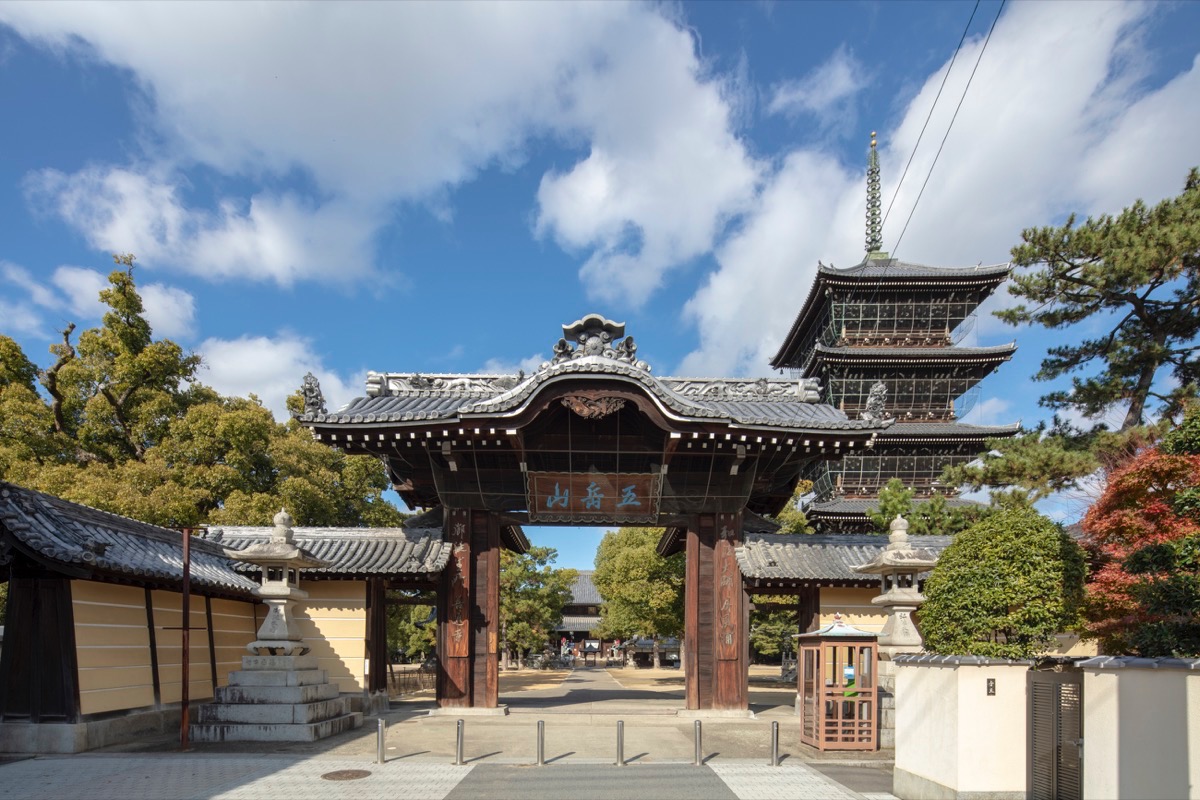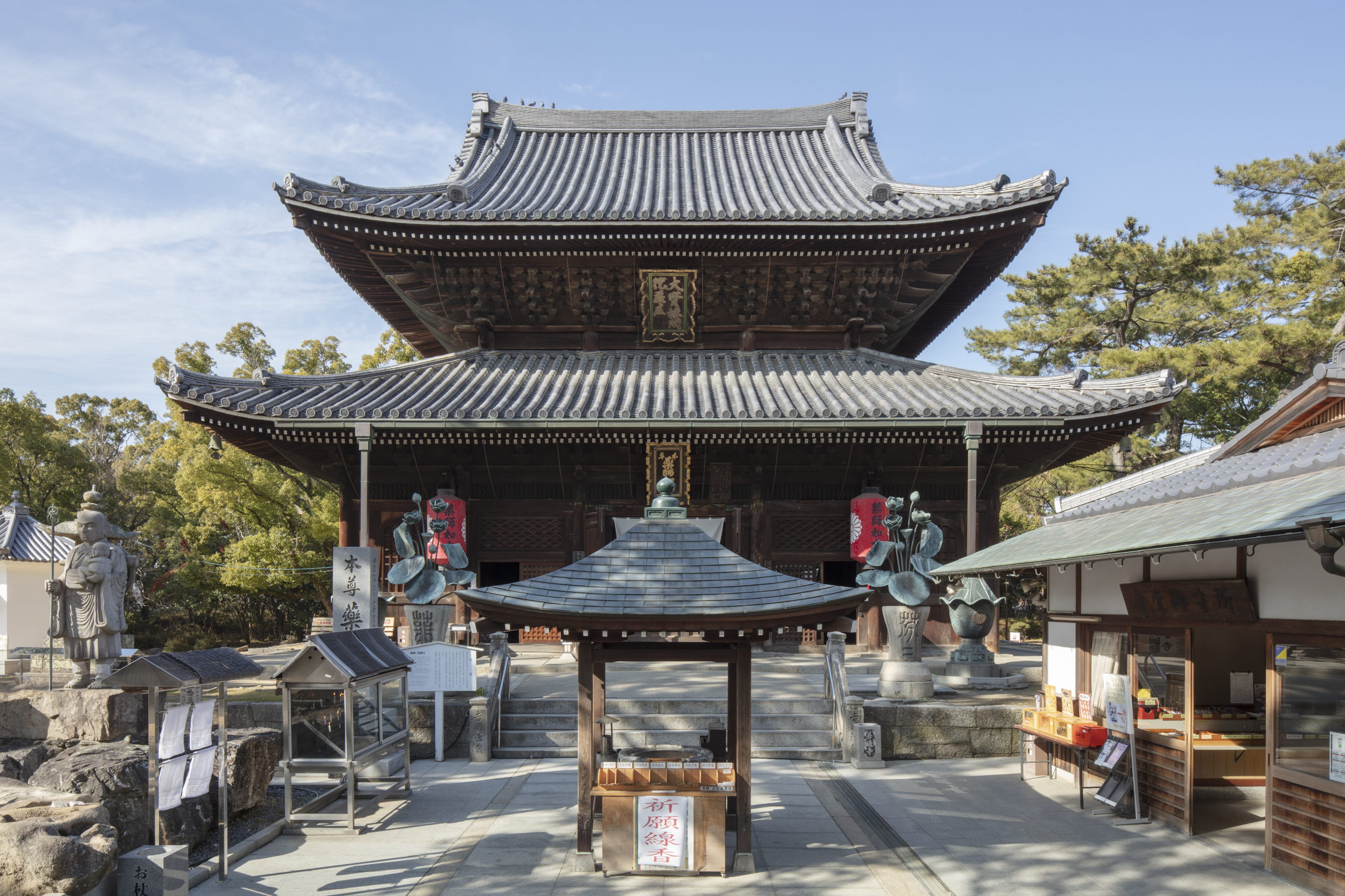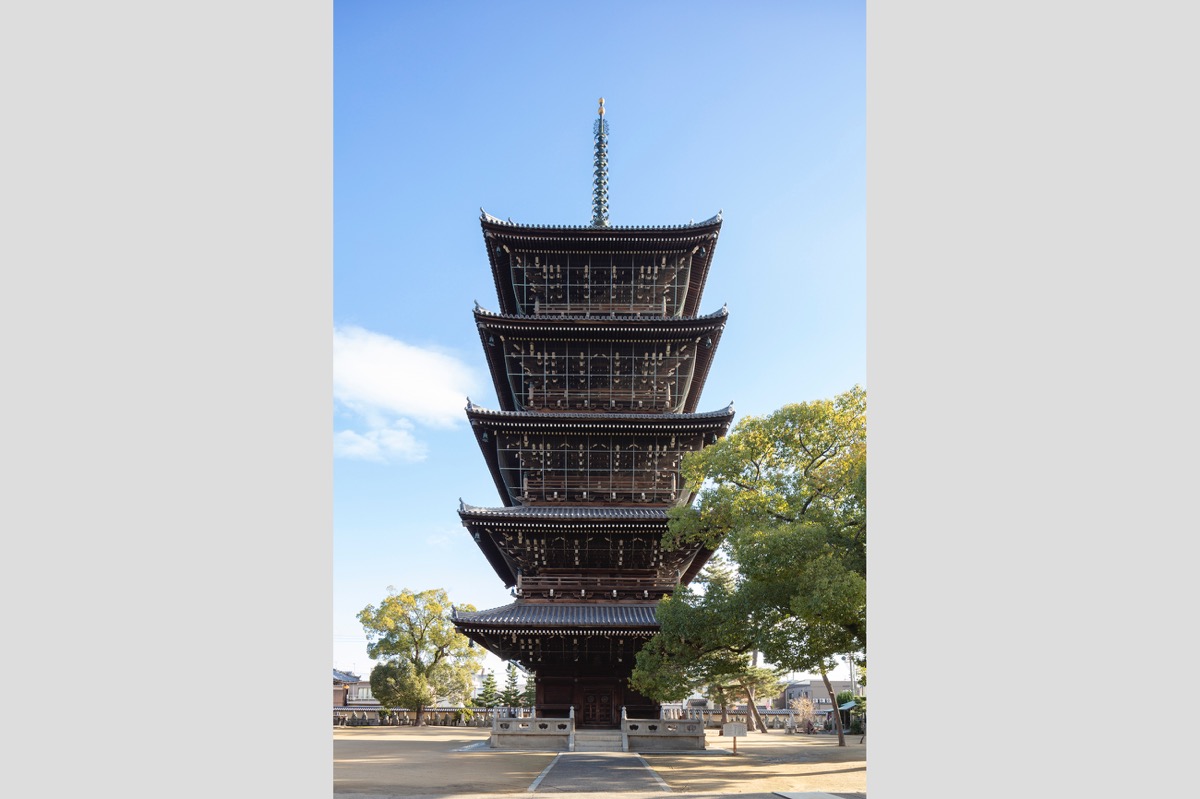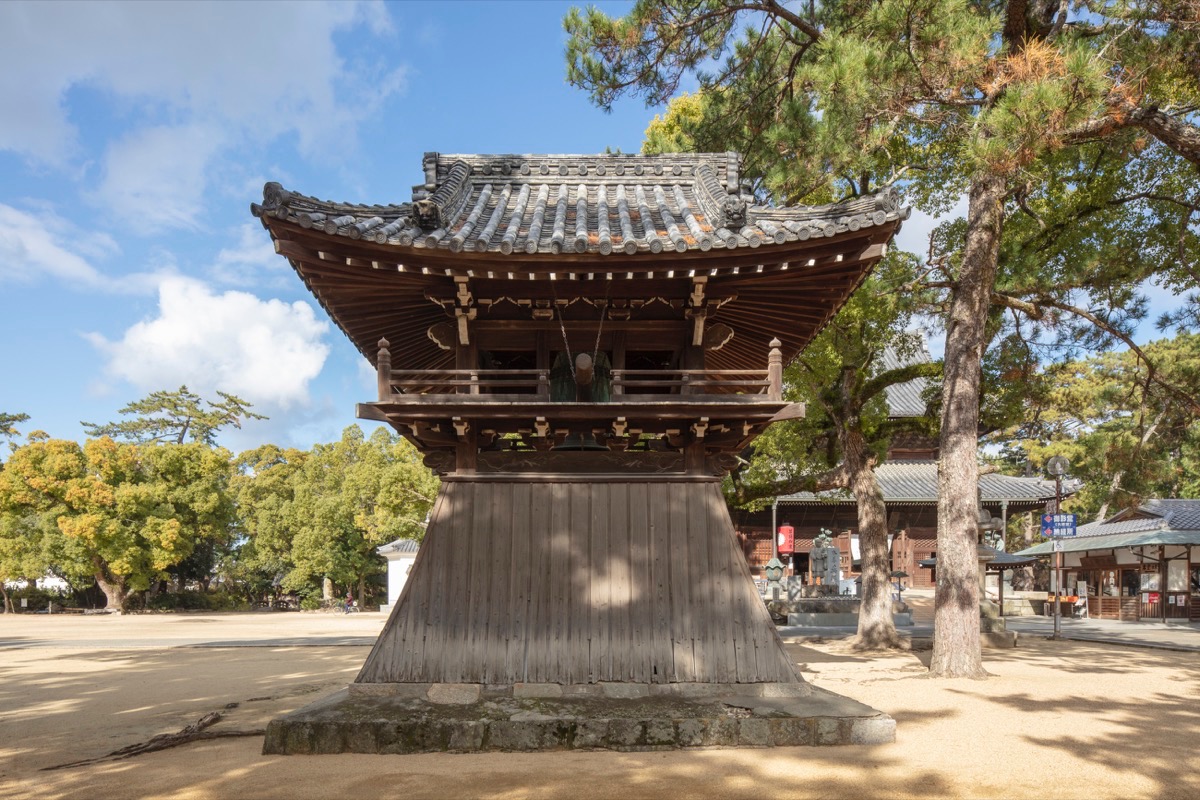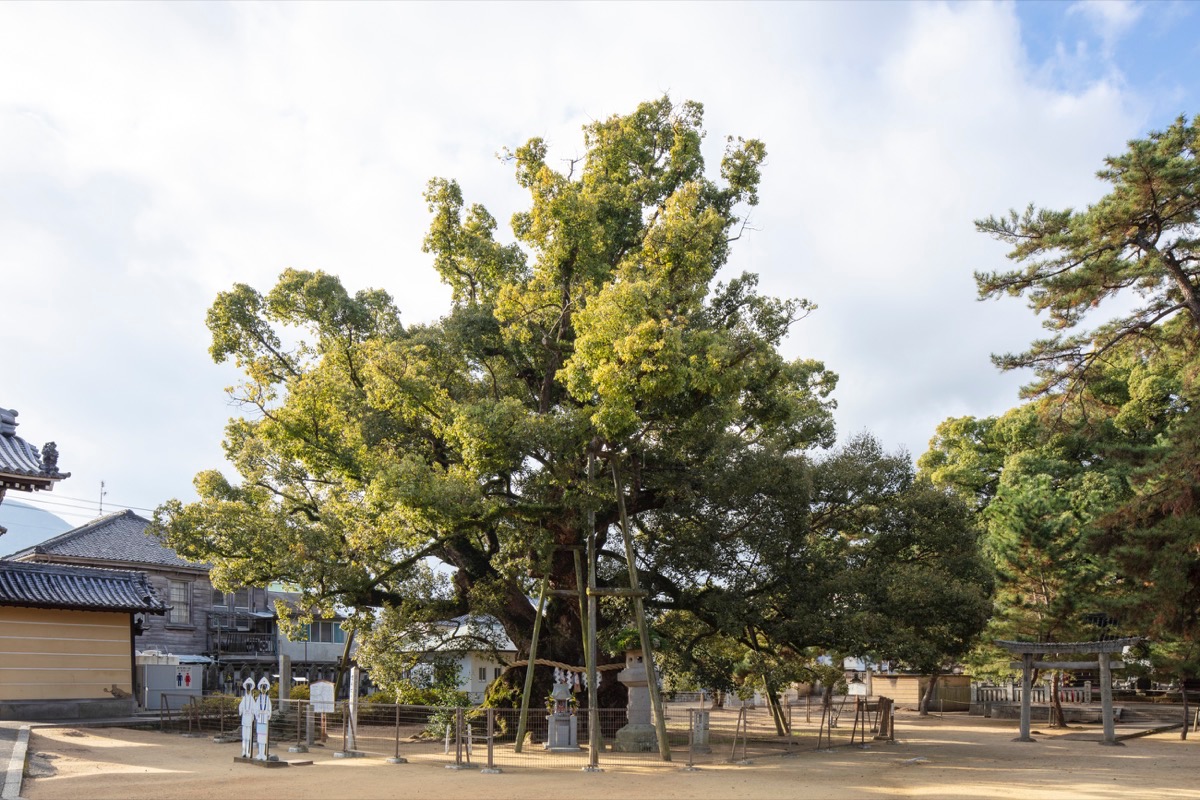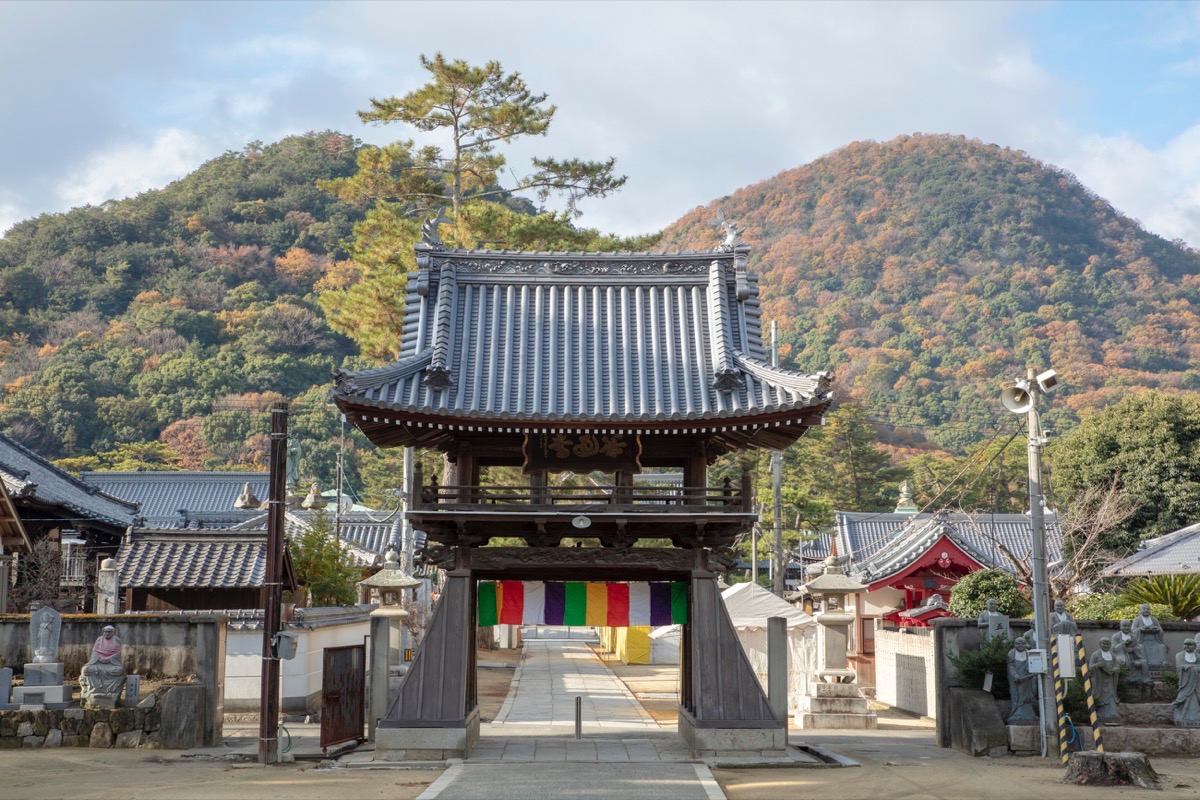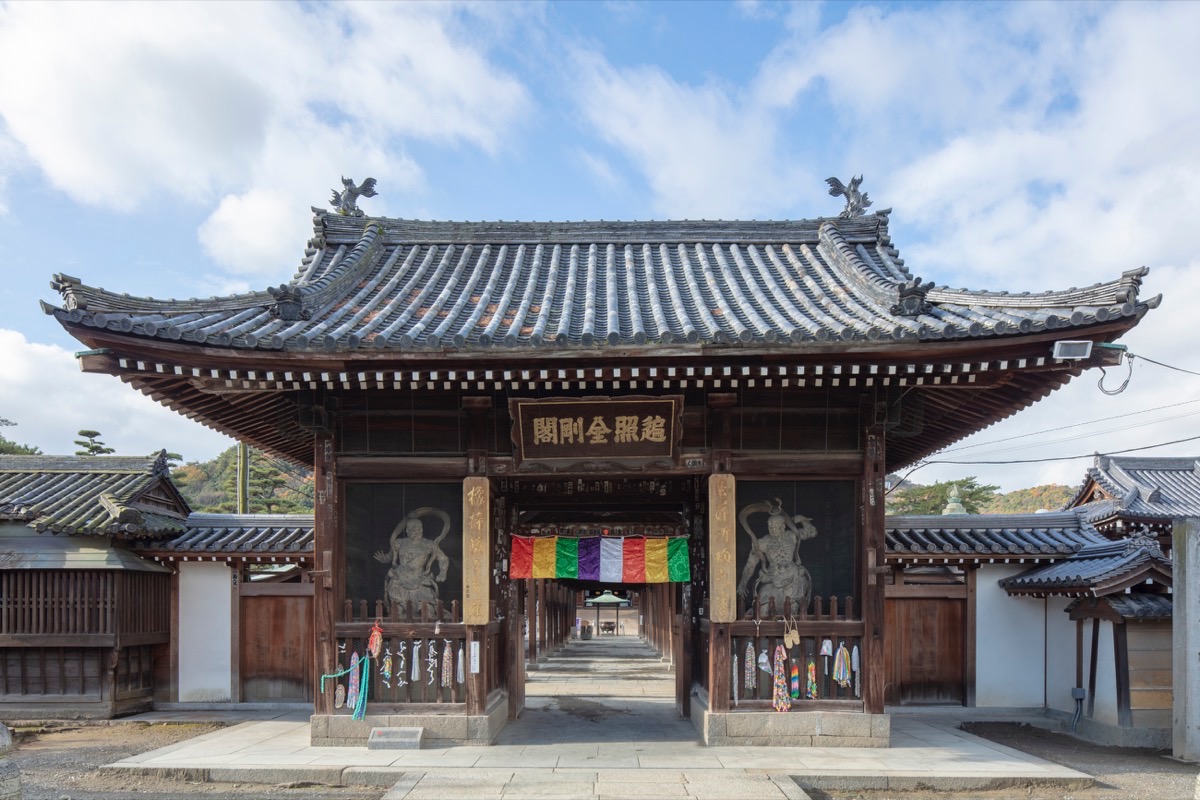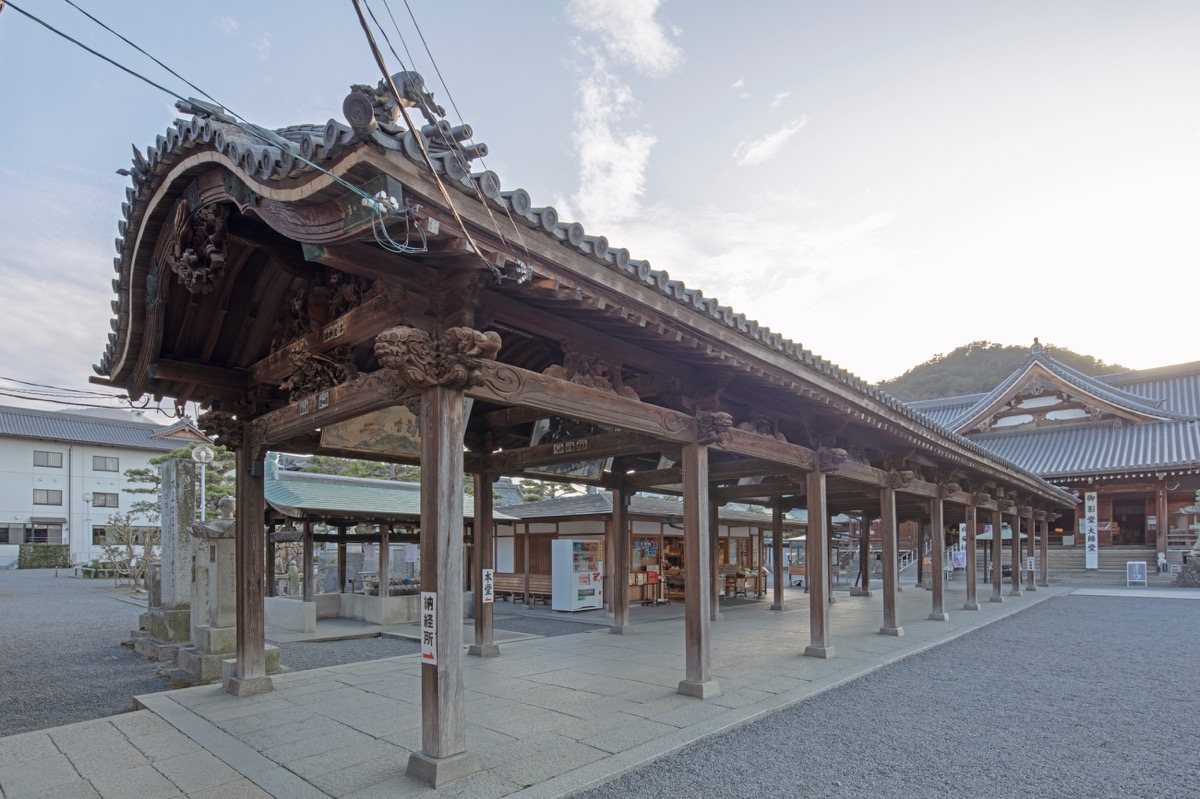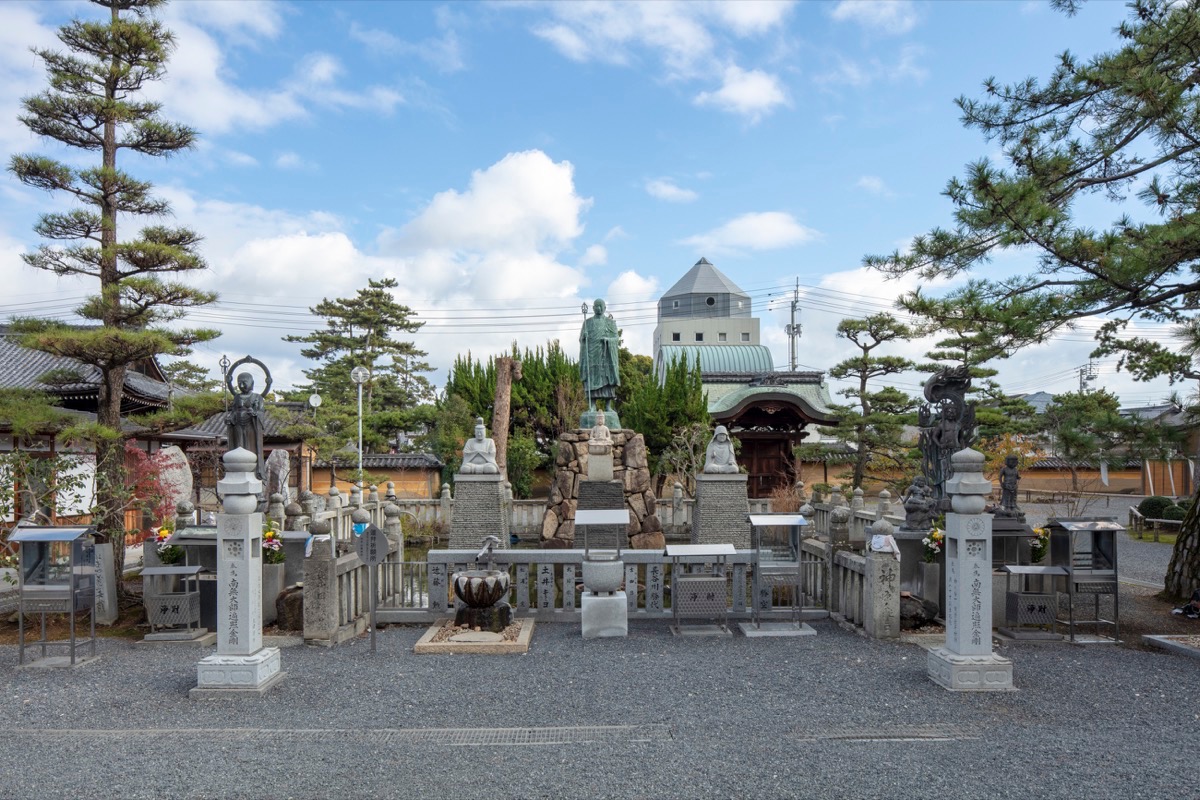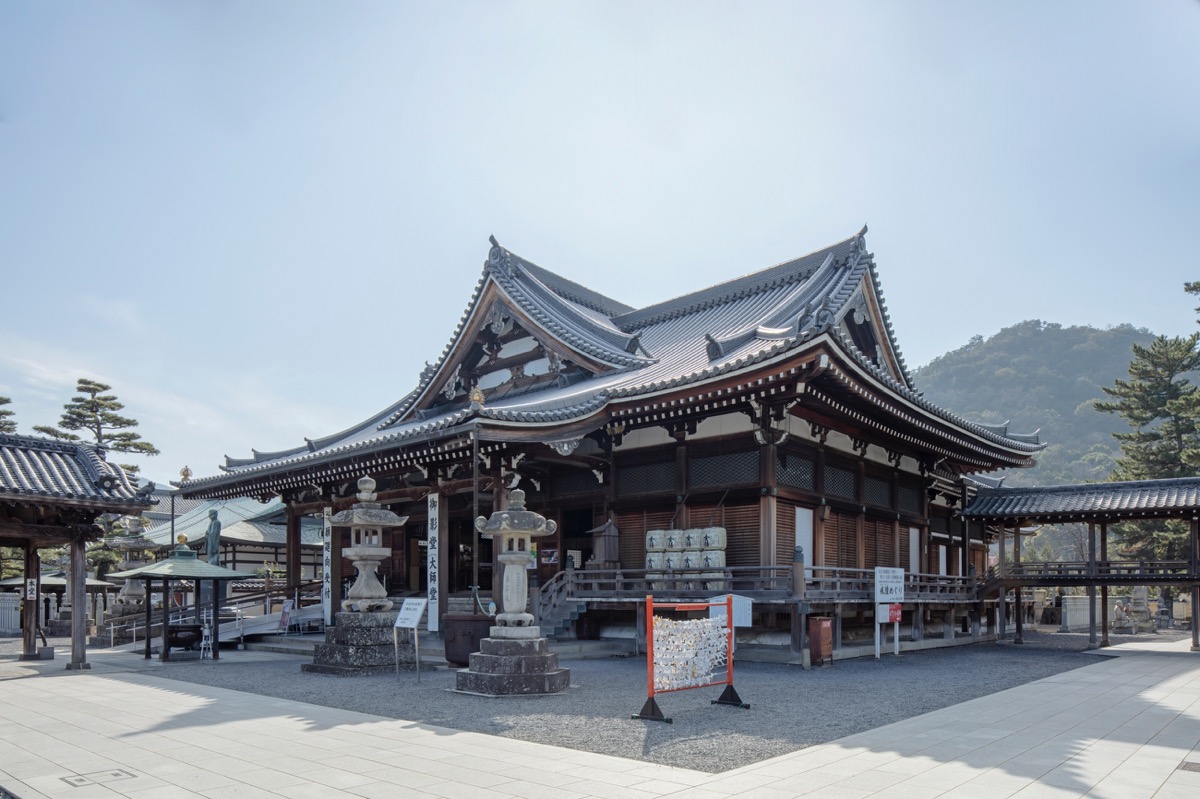Zentsuji TempleThe 75th Temple Zentsuji Temple
| District | Shikoku Henro pilgrimage | Period | ー |
|---|---|---|---|
| Set Content/Set Date | |||
| Owner | Zentsuji Temple | Location | 3-3-1 Zentsujicho, Zentsuji, Kagawa |
Zentsuji Temple, the 75th sacred spot along the Shikoku Henro pilgrimage, is a historic temple on par with Kongobuji Temple on Mt. Koya in Wakayama Prefecture and Toji Temple in Kyoto, and is said to be the birthplace of Kobo Daishi (Kukai).
Due to its folding screen shape and the five mountains of Mt. Koshiki, Mt. Fudenoyama, Mt. Gabaishi, Mt. Naka, and Mt. Hiage lined up behind it, Zentsuji Temple is called Byobugaura Gogakuzan (Five Mountains Behind the Folding Screen).
According to writings documenting the temple’s origins and history, it is said that Kobo Daishi was born in the building behind the current Mieido Hall in 774 (Hoki 5). The temple was built in 807 (Daido 2), after Kobo Daishi returned from Tang China, and named it Zentsuji.
Until the Edo period (1603-1868), Zentsuji Temple and Tanjoin Temple were separate, each with its own head priest. In the Meiji period (1868-1912), however, these temples came together as one under the name Zentsuji Temple.
The precincts are separated into the East and West Temple. The East Temple includes the Golden Hall, five-story pagoda and bell tower, among other structures, as well as a giant camphor tree standing 20 meters tall, which is said to be have been planted by Kobo Daishi himself.
The West Temple is also called Tanjoin Temple, and there are places associated with Kobo Daishi located around Mieido Hall, such as the well where Kobo Daishi was first bathed as a baby, and Mikage Pond.

